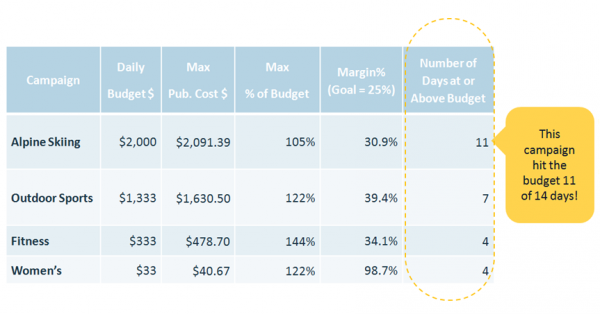The Lazy Search Marketers Guide To Increasing Volume Without Adding New Keywords
Sick of spending afternoons reviewing raw query reports? We’ve all been there— pouring over keyword expansion tools trying to identify those stellar terms that your account may be missing. Adding new keywords and refining match types is certainly important for optimization, but it’s not necessarily the fastest way to increase volume. Often, advertisers focused on […]
Sick of spending afternoons reviewing raw query reports? We’ve all been there— pouring over keyword expansion tools trying to identify those stellar terms that your account may be missing. Adding new keywords and refining match types is certainly important for optimization, but it’s not necessarily the fastest way to increase volume.
Often, advertisers focused on growing their paid search programs pay too much attention to keyword expansion activities. It’s not surprising that this bias persists — given the multitude of keyword tools out there such as Wordstream, Trellian, or Adgooroo, each promoting their unique flavor of keyword data.
Once you’ve built out your core search program, however, adding long tail terms often requires a massive expansion to have even a small impact on traffic volumes.
Before you embark on a long-tail keyword expansion effort, ask yourself: have you done everything you can to maximize the volume from your existing keywords?
Here are a few tricks outside of keyword expansion that I have seen have a great impact for search marketers.
Don’t Let Budgets Constrain Top Performing Keywords
You never know when something Oprah mentions is going to increase traffic on a particular keyword four-fold overnight. Budget settings are important because they prevent situations like Oprah, from causing advertisers to blow through a month’s budget on poorly converting traffic.
However, on a regular basis, budgets shouldn’t be limiting volume for top performing campaigns. In general, if keywords are delivering positive margins, you should want to take advantage of all of the profitable traffic that is available.
In order to maximize volume, regularly review top performing campaigns to ensure that impressions aren’t being limited by budgets.
To identify campaigns that meet these criteria, pull a report that includes the previous month’s daily cost, budget, and margin.
If campaign spend tends to be at or above the budget for strongly performing campaigns, increasing the campaign budget will most likely drive additional high performance traffic.
For example, in the spreadsheet below, the advertiser had four campaigns that were performing better than their target margin of 25%, but they weren’t taking advantage of all of the volume that these campaigns could have delivered.
Try Out “Accelerated Delivery” for More Volume
Many advertisers don’t realize that the Google delivery method setting can affect the rate of traffic campaigns receive, even if their budgets are significantly higher than expected traffic.
With Google AdWords, we’ve observed that selecting the “standard delivery” option instead of the “accelerated delivery” option with the same budget, results in fewer impressions.
After ensuring that top performing campaigns aren’t budget limited (step one), turning your campaign settings to “accelerated delivery” could provide incremental impressions and revenue.
Expand Your Reach With Keywordless Ads
Rather than trying to mine the long tail by adding keywords by hand, consider taking advantage of Google’s Keywordless Ads. While this feature is still in “beta,” we’ve worked with a number of retail advertisers who have opted into Keywordless Ads (now known as “Dynamic Search Ads”) and seen a lift in conversions and revenue.
The feature basically turns Google loose on your website, allowing them to target your ads to keywords they think match the content on your pages.
Be careful when setting it up to apply negative placements to the non-commerce pages of your site such as support pages, careers and management pages, or about us pages. Excluding these pages will help Google match your ads to the right queries, and save you some unwanted clicks.
To sum it up: while continually adding keywords is important, don’t forget the other settings and tweaks that can impact volume on your SEM campaigns. Taking some of the steps above could get you one step closer to unlocking the full potential of your program.
Do you have some easy to implement tips that have made a big change in your paid search volumes? If so, I’d love to hear about them in the comments below.
Contributing authors are invited to create content for Search Engine Land and are chosen for their expertise and contribution to the search community. Our contributors work under the oversight of the editorial staff and contributions are checked for quality and relevance to our readers. The opinions they express are their own.
Related stories
New on Search Engine Land
